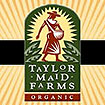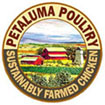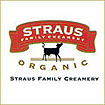ARK
OF TASTE
In keeping with Slow Food's
commitment to biodiversity, preservation of endangered cuisine
and the cultures that they represent, Slow Food established a
symbolic “Ark of Taste (ark”as
in “Noah's) “into”which endangered food
and agricultural products –and especially almost forgotten
“flavors”can be “placed.”Such a process
is akin to an animal or bird being listed on the U.S. Fish and
Wildlife Service “Endangered Species List”in
that simply by declaring a plant or animal as “endangered”
sets in motion a conscious effort to find ways to
preserve the species.
In
this case, the aim of the Slow Food Ark of Taste
is to rediscover, catalogue, describe and promote these almost
forgotten flavors, including certain recipes and cooking techniques
that are in danger of slipping away. So it is appropriate for
the “Ancient Tastes”event to showcase
many of these foods. But in order for these foods and flavors
to not only be preserved, but to be accessible to the public,
Slow Food developed initiatives known as The
Presidia – from the Latin meaning “to protect”
or “garrison”which are economic support entities
(consortia of farmers, trade groups, marketing organizations)
that create sustainable futures for the special foods, animals
and precious flavors in all parts of the world.
Appetizer
My first dinner at Antichi Sapori is all
based on dishes some age old –of the traditional Tuscan
farm and many of them are foods that have been symbolically “taken
into”The Ark and now have “Presidia”
enterprises to support them. The meal starts with a delicious
Antipasti of Pecorino Cheese with Honey and a
Vegetable Frittatini. Pecorino Cheeses
from the mountains of Pistoia are special in that they must be
made only from raw un-pasteurized sheep milk by family farmers
with 100 year old methods. The sheep are of a certain breed –the
Massese –which have dark spiraling horns and
black fleece. Cheeses each seem to have their “soul mates”of
certain foods and wines, and Pecorino's
soul mate is Castagna (Chestnut)
Honey, which has a strong bitter-sweet flavor that is killer with
the “Abbucciato”(firm but not
dried) Pecorino. The Tuscan Frittatini
(little Frittata) or small omelet that is typically served
cold is in this case spiked with chunks of potatoes and green
vegetables. Matched with the Pecorino
and Castagna Honey, it provides a delicious
combination of flavors that whets the appetite for the next course.
The
Primi Piatti
(First Course)
is a delicious Pappardelle (fresh homemade
wide pasta) with ragu that is generously endowed with succulent
Rabbit. Actually, the traditional Tuscan table features very little
pasta, with the exception of Pappardelle.
But rather the famous Tuscan bread is what is used in a myriad
of dishes… especially if it is a bit stale! Tuscan cuisine
has been best described as a “Bread Based Cuisine.”So
our next dish is a deeply flavored typical old Tuscan delicacy,
Ribollita – or reheated Tuscan bread soup.
Ribollita means re-boiled and it is
really Minestra di Pane (Bread Soup)
that has aged a day or so and is reheated after the flavors have
had a chance to sink in and marry. The soup is typically made
with black leaf kale, pre-soaked white beans, onion, carrot, celery
and parsley, olive oil, a bit of tomato paste, shredded beet greens,
potatoes, seasoning of salt, pepper and fresh thyme, and thinly
sliced day old Tuscan bread. After cooking the vegetables, place
the bread in layers in a terracotta oven-ready pot and cover each
layer with the vegetable soup and olive oil.
Over dinner, I am briefed on the role of Slow Food in the current
festivities, and prepared for the coming days when we will learn
how to prepare nearly lost dishes and taste the products of some
of the more than 25 Tuscan Presidia.
Secondi
Piatti
(The Main Course)
is served with great excitement because the aromas of the Pollo
e Coniglio in Umido, (Rabbit and Chicken Stew,)
which has been cooking for the last hour, wafted through the room
enticing us. The traditional Tuscan kitchen is blessed with the
bounty of its global traders, including a myriad of seasonings.
According to the writer/historian Marco Lolli, many of the once
common wonderful fragrances that came from the Tuscan kitchen
have “almost disappeared.” The Antichi Sapori
event reintroduces many of the spices and seasonings including
pepolino (thyme), persia
(sweet marjoram), nepitella (calamint), menta
(mint), salvia (sage), ramerino
(rosemary), and parsley. Also used are Finocchio
(fennel) seeds, chiogi di garofano (cloves),
canella (cinnamon), and most dishes are
well peppered. Peperoncino (red chili pepper),
cipolla (onion), scalogno (shallot),
porro (leek) and zenzero (ginger)
are part of the mix as well, but the main aromatic is, not surprisingly,
aglio (garlic).
The Stew is served
with a side dish of White Beans with
Olive Oil and Salad.
Tuscan cuisine will find many traditional dishes made with the
nutty flavored Cannellini White Bean,
which is said to have originated in Argentina. These old farm
recipes, are amongst Italy's most hardy and tasty dishes.
For dessert we have Cenci pastries –
literally “rags,”these light
fried pastries are especially tasty when dipped in 5 year old
Vin Santo Dessert Wine. The light pastries are
made with flour, sugar, egg, bicarbonate of soda, vin santo and
flavored with aniseed, vanilla and orange skin zest and dusted
after frying with confectioners sugar.
Luckily
I am able to get into a sold-out workshop on the preparation of
a rare Tuscan delicacy –Roventino. Although
it sounds as if this dish should be from the murky forests of
Count Dracula's Transylvania, this fried pig blood frittatine
dates back to the Florentine middle-ages and is quite delicious.
The workshop, attended by Slow Food aficionados,
is about to start when I enter the community center kitchen. We
learn that this nutritious dish is in danger of becoming extinct
because the Art of Butchering in the old way is being lost.
It is now virtually illegal in Italy to have a small local butcher
shop that can slaughter as well as cut fresh meat. Roventino
requires fresh blood, which is impossible to purchase, so the
only chance to taste is if you happen upon a farm-raised pig at
slaughter time… and the farmer is willing to share the
treasure. The workshop moves into the kitchen where the tradition
is passed on from the farmers and chefs to us. We learn how to
prepare and cook this unique dish.
Preparation
of Roventino
Into a liter (in our case, a big pot,
so everything was proportionate) of fresh pig blood, whisk
in two tablespoons of plain white flour that has been dissolved
in vegetable broth, and a couple of pinches of salt, pepper, minced
garlic, grated lemon peel, fresh rosemary and a pinch of ground
nutmeg.
Procedure:
Into a small red hot frying pan put some
lard, melt on a high flame. Then put a small ladleful of blood
into the pan and LEAVE IT until the surface bubbles and slightly
blackens. Then the fun part! Each “frittatine” (almost
the consistency of a pancake) must be individually flipped! This
takes some practice, so expect to miss the pan a few times. I
am lucky and my first try turns out pretty good!
After cooking the other side for a minute or two, slide the Roventino
onto a plate, sprinkle with parmigiano reggiano or aged hard Pecorino
cheese and serve HOT. This tasty, hard to find, winter dish gives
new meaning to the Tuscan phrase ““We use every part
of the pig but the squeal!"
Page
2
|























